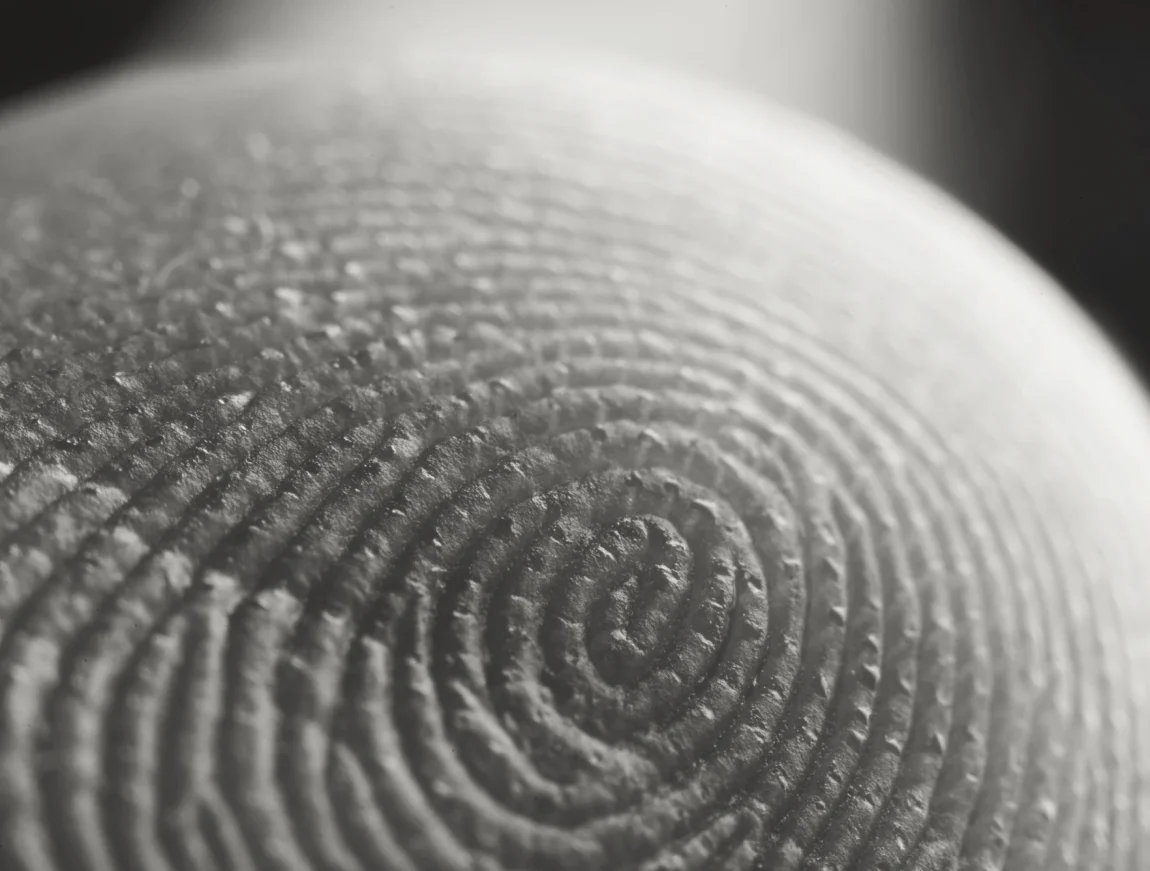Picture this: you’ve just logged into your online banking. You enter your username and password, but before you can access your account, you receive a prompt on your phone asking you to confirm your identity. You type in the code or tap ‘approve’ and only then are you granted entry.
That second step might feel like a minor inconvenience, but it’s one of the most effective safeguards against cyber crime: multi-factor authentication (MFA).
So, how does multi-factor authentication work? At its core, MFA requires users to provide more than one piece of evidence to verify their identity. Instead of relying solely on a password, which can be stolen, guessed, or reused, MFA combines multiple categories of authentication. This extra layer makes it significantly harder for malicious actors to gain unauthorised access, even if one factor becomes compromised.
In this comprehensive guide, we’ll explore how MFA works, the types of authentication factors, step-by-step login scenarios, the strengths of different MFA methods, and ultimately, how Net-Defence can help your organisation secure its systems.
The three pillars of authentication
At the heart of MFA are three categories, often referred to as the pillars of authentication. Understanding them is the first step in answering the question: how does multi-factor authentication work?
1. Something you know
The most familiar authentication factor is knowledge-based, relying on information that only you should know. Passwords are the most common example, but they are also the most vulnerable, as they can be guessed, stolen, or leaked through data breaches.
Personal identification numbers (PINs) are another form of knowledge-based security, often used for mobile devices, online banking, or card transactions. Security questions also fall into this category, where users are asked to provide personal details such as a mother’s maiden name or the name of a first pet.
However, these are increasingly seen as insecure, since so much personal information can now be researched or even found on social media.
The fundamental drawback of this factor is clear: once someone else discovers the information, it is compromised. This is why multi-factor authentication does not rely on knowledge alone, but layers additional factors to strengthen security.
2. Something you have
The second pillar of authentication is possession, which is based on physical items or digital tokens that a user owns. In practice, this might be a smartphone that receives one-time passcodes (OTPs) via SMS or push notifications, ensuring that only the person with the registered device can complete the login process.
Increasingly, authenticator apps such as Microsoft Authenticator or Google Authenticator are used to generate time-sensitive codes directly on the device, offering a more secure alternative to SMS. Hardware tokens, like YubiKeys, are another option; these small devices plug into a computer or connect wirelessly to confirm identity, providing strong resistance to phishing attacks.
In some business environments, smart cards are also used in conjunction with card readers to grant access to systems or premises. The principle is that even if a hacker manages to steal a password, they would also need this second, physical element to gain entry – an additional hurdle that makes unauthorised access more difficult.
3. Something you are
The third factor is inherence, which is tied to your biological or behavioural characteristics. Fingerprints are one of the most widely used biometric identifiers, found in everything from smartphones to secure workplace access systems.
Facial recognition, such as Apple’s Face ID, has become increasingly popular for its convenience and speed, while high-security environments sometimes employ iris or retina scans for even greater accuracy.
In addition to physical traits, behavioural biometrics such as voice recognition or analysis of typing patterns are also being developed as authentication methods. Because these identifiers are inherently tied to the individual, they are far more difficult to replicate or steal, making them powerful tools for authentication.
However, they do come with challenges around privacy and the secure storage of biometric data, which organisations must carefully address. Despite these considerations, the inherence factor remains one of the strongest defences against identity theft.
These three pillars form the foundation of multi-factor authentication. When combined across different categories, they create a layered defence that makes it dramatically more difficult for attackers to compromise an account or system.
A step-by-step breakdown
So, how does multi-factor authentication work in practice? Let’s walk through a simple example together:
1. Enter your credentials: You log into an account with your username and password. This is ‘something you know’.
2. Receive a second prompt: A one-time code is sent to your smartphone (either via SMS or an authenticator app) or you’re asked to insert a hardware token. This is ‘something you have’.
3. Verify your identity: You input the code, tap ‘approve’, or connect your token.
4. Optional biometric check: Some systems may also require your fingerprint or a facial scan – ‘something you are’.
5. Access granted: Only after passing all required factors can you enter.
In this flow, even if your password were stolen in a phishing attack, the attacker would still need your phone, token, or biometric data. MFA provides multiple hurdles, drastically reducing the risk of a breach.
Beyond the basics: MFA methods compared
Not all multi-factor authentication methods are created equal with regard to the level of protection they provide. Understanding the differences is important when deciding which approach to adopt.
SMS codes
One of the most familiar methods is the SMS code. In this scenario, a one-time code is sent via text message to a user’s mobile phone. The advantage of this method is that it is simple to set up and use, requiring no special software or devices beyond a phone.
However, SMS-based authentication is also vulnerable to weaknesses such as SIM-swapping, interception, or delays in delivery, which can undermine its reliability and security.
Authenticator apps
A stronger alternative is the use of authenticator apps, such as Microsoft Authenticator, Google Authenticator, or Authy. These apps generate time-based codes that refresh every 30 seconds, providing a more secure layer than SMS because the codes are generated locally on the device rather than transmitted over a potentially insecure network.
Authenticator apps also work without mobile signal, making them more versatile. The downside is that they require users to set them up correctly and ensure backup methods are available in case the phone is lost or reset.
Push notifications
Push notifications represent another popular MFA method. Instead of typing in a code, the user receives a notification on their smartphone and simply taps ‘approve’ or ‘deny’ to verify their identity.
This approach is user-friendly and reduces friction, but it is not without risk. Attackers have developed a tactic known as ‘MFA fatigue’, in which they bombard users with repeated login attempts, hoping the user will eventually approve a request by mistake or out of frustration.
Hardware tokens
Hardware tokens provide one of the most secure forms of multi-factor authentication. Devices like YubiKeys or RSA tokens generate unique credentials or connect directly to a computer to confirm identity.
Because they are physical items, they are extremely difficult for attackers to replicate, making them particularly resistant to phishing attacks. The trade-off, however, is cost and practicality: tokens can be lost or damaged and need to be properly distributed and maintained across a workforce.
Biometrics
Finally, biometric authentication, such as fingerprints, facial recognition, or iris scans, offers a convenient and highly secure solution. These methods are difficult to forge and can be seamlessly integrated into devices that many people already use on a daily basis, such as smartphones.
Nevertheless, they do raise important privacy considerations, particularly around how biometric data is stored and protected. Unlike a password, a fingerprint or face cannot be changed if the data is compromised.
When answering “how does multi-factor authentication work?” it’s important to recognise these trade-offs. Each method has its place, depending on risk level, user convenience, and organisational resources.
Why MFA matters more than ever
Cyber security threats are evolving at an alarming pace, and organisations face daily challenges from phishing campaigns, credential stuffing, brute-force attacks, and more sophisticated identity-based threats. In this environment, relying on passwords alone is no longer sufficient protection.
Many attacks succeed precisely because attackers exploit weak, reused, or stolen credentials – things that a password-first-only approach simply cannot reliably defend against.
One of the most compelling arguments for MFA is based on data from Microsoft, which states that enabling multi-factor authentication makes accounts more than 99.9% less likely to be compromised. According to Microsoft, even relatively weak MFA methods (such as SMS-based one-time passwords) help drastically reduce compromise rates.
What this means in practice is powerful. For a business that adopts MFA broadly, the risk of a costly data breach is substantially lower. Not only are regulatory fines and compliance failures less likely, but the chances that sensitive customer or corporate data will be exposed shrink considerably.
Furthermore, the ripple effects of having MFA in place extend beyond raw breach prevention. Employees feel more secure, customers are more confident in doing business with organisations that demonstrate strong security hygiene, and stakeholders view MFA as a mark of maturity in cyber security posture.
Still, it’s also important to understand that MFA is not a silver bullet. Attackers are adapting techniques such as adversary-in-the-middle phishing, token theft, or MFA fatigue (where users are tricked into approving fraudulent prompts) are increasingly used.
So, while MFA can block over 99.9% of account compromise attacks (when properly configured and enforced), it must be part of a layered security strategy – combining strong policies, user education, monitoring and response, and choosing more resilient MFA methods where risk is higher.
Common challenges and solutions
While MFA is powerful, businesses can face hurdles that need to be managed carefully. In this section, we will explain some of the key challenges that tend to arise when businesses try to implement MFA and suggest ways to overcome said challenges.
Resistance to change
Some employees perceive MFA as inconvenient or unnecessary, leading to reluctance in adopting it. To overcome this, organisations should highlight the security benefits, explain how MFA protects personal and company data, and provide user-friendly methods such as push notifications to minimise disruption and increase acceptance.
Lost devices
Smartphones, tokens, or smart cards can easily be misplaced, creating the risk of lockouts. To address this, organisations should establish clear recovery processes, such as backup authentication factors or administrator overrides, ensuring users can regain access quickly without compromising security. This helps reduce downtime and frustration.
Costs
Implementing MFA can involve costs, particularly if an organisation chooses hardware tokens or enterprise-level licensing. However, these costs should be weighed against the financial and reputational damage of a breach. Scalable cloud-based options are increasingly affordable, allowing businesses to introduce MFA gradually and expand coverage as budgets and needs grow.
IT overhead
Rolling out and managing MFA across a large workforce requires planning and resources. From onboarding users to integrating with multiple systems, IT teams can be stretched thin. Partnering with an experienced IT support provider can streamline deployment, ensure proper configuration, and offer ongoing support, reducing the internal burden.
The future of MFA
Cyber security never stands still. As attacks become more sophisticated, authentication methods must evolve to stay one step ahead. Here, we will look into some of the key changes we’re likely to see as multi-factor authentication continues to grow and improve.
The shift towards passwordless
The future of multi-factor authentication is moving away from traditional passwords. Passwords remain the weakest link in most systems, often reused or stolen in breaches. Passwordless authentication replaces them with possession factors, such as smartphones or security keys, and inherence factors, such as biometrics. This shift not only strengthens security but also simplifies the login process for users.
FIDO2 standards
One of the biggest drivers of passwordless adoption is the FIDO2 standard, created by the FIDO Alliance and W3C. FIDO2 enables users to log in using device-based authenticators, fingerprints, facial recognition, or physical security keys – without ever typing a password. Supported by major providers like Microsoft, Google, and Apple, FIDO2 is becoming the foundation of a passwordless internet.
Behavioural biometrics
Beyond physical traits, behavioural biometrics are emerging as a powerful form of authentication. These methods analyse unique patterns in user behaviour, such as typing rhythm, mouse movements, or the way a device is held. By building an ongoing profile, systems can verify identity in real time without interrupting the user.
Continuous authentication
Taking behavioural monitoring further, continuous authentication verifies identity throughout a session rather than just at login. If unusual behaviour is detected, for example, a sudden change in typing style or location, the system can prompt for re-authentication or restrict access. This dynamic approach offers better protection against evolving cyber threats.
Preparing for tomorrow
The future of MFA is geared towards providing seamless, intelligent security. Passwordless systems, behavioural biometrics, and continuous authentication are designed to reduce user friction while raising security standards. By adopting MFA today, organisations not only protect against current risks but also prepare for the passwordless world ahead.
How can Net-Defence help?
Multi-factor authentication has become one of the most effective ways to defend against cyber threats. By requiring more than one form of proof to verify identity, MFA makes it significantly harder for attackers to compromise accounts – even if they manage to steal a password.
Yet, for many organisations, understanding the options, implementing the right solution, and making sure that employees adopt it confidently can feel overwhelming. That is where our team can help.
We work with businesses of all sizes to design and implement MFA solutions tailored to their unique needs. Whether your organisation relies heavily on Microsoft 365, cloud applications, or on-premises systems, our team ensures that MFA integrates seamlessly into your existing infrastructure.
We also recognise that user experience is just as important as security. That’s why we provide training and support to help employees understand the importance of MFA and feel comfortable using it, reducing resistance to change.
Adopting MFA is one of the simplest and most powerful steps you can take to safeguard your data, protect your workforce, and build trust with your customers. Contact Net-Defence today to find out how we can help your business strengthen its security and stay one step ahead.







